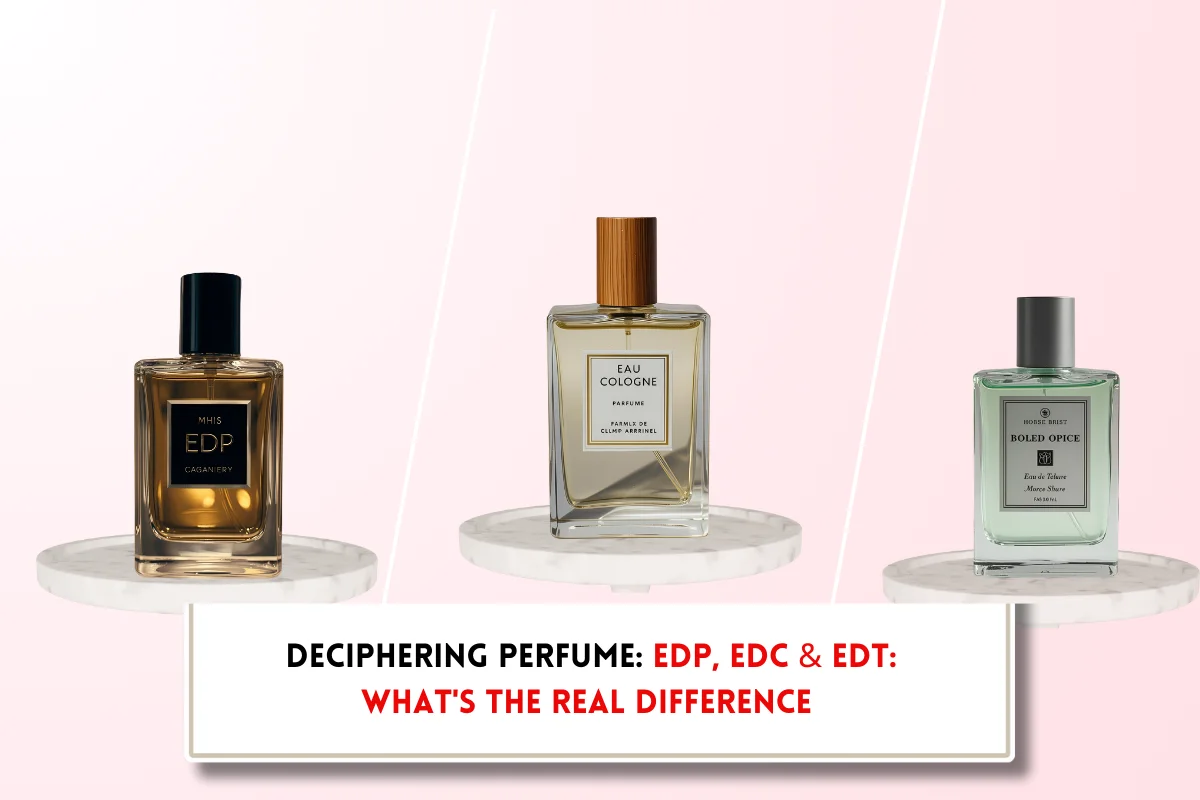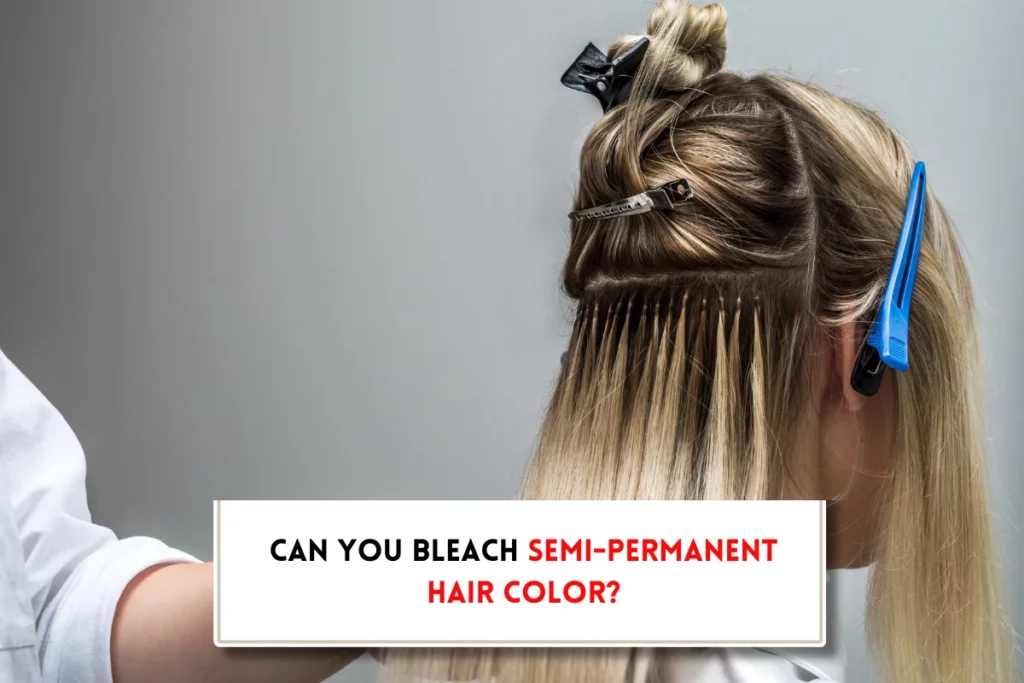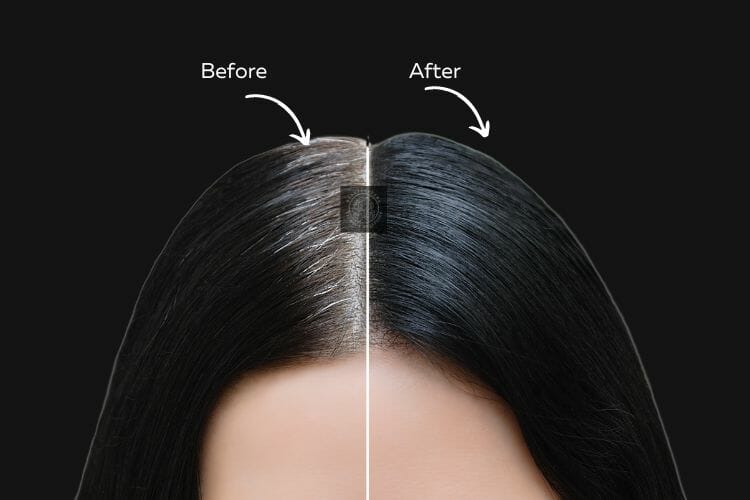Decoding the game-changer! What is a single process color for hair?
At BeautyCaters, our expert team independently curates every recommended product. Purchases through our links may earn us a commission. Explore our transparent selection process.
Want to adorn a new hair look but unsure about the process? Single process color might be just what you’re after. Heard the term in the salon, right? Whether you want a subtle change or a bold statement, this simple dying technique can do all. So, come and learn what is a single process color for hair, and why is it one of the most popular coloring techniques. I will also tell you how to pick the perfect shade for you. Let’s get started!
- What does single process color mean?
- What are the variations of single-process color?
- What are benefits of single process color?
- What are drawbacks of single-process color?
- Is single-process hair color the right choice for you?
- How to choose the single process hair color?
- How to take aftercare of single process color?
- Single Process Color vs. Other Techniques
- 5 Single Process Color ideas to try
- When should you choose single process color?
- Can you get both highlights and single process color?
- FAQ: Single Process Color
- Final Word: What is a single process color for hair?
What does single process color mean?
Single process color is a simplest way to dye your hair. This coloring technique involves applying a single dye formula to the entire head of hair, resulting in a uniform color. This method is often used to cover gray hair, refresh the natural color, or achieve a dramatic transformation.
Unlike some other coloring techniques, single process color does not require the use of foils. This makes it a relatively simple and efficient process, making it a popular choice for those seeking a quick and easy hair color change.
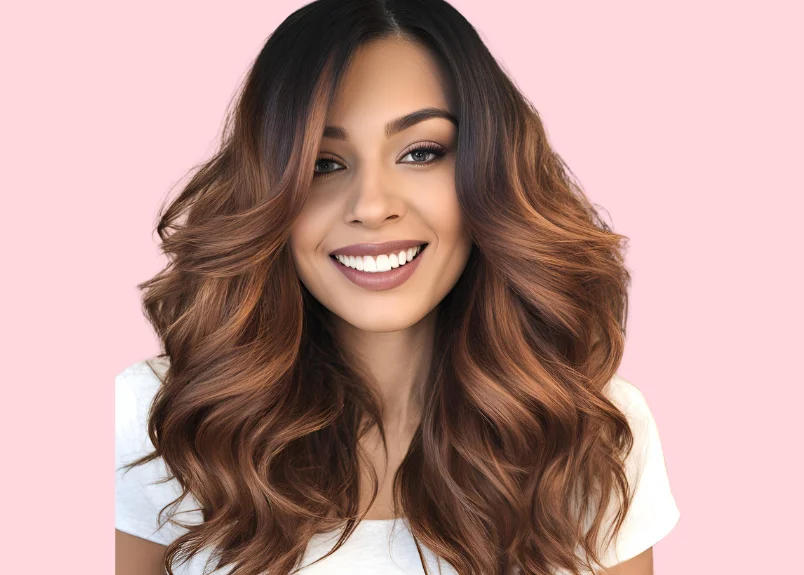
What are the variations of single-process color?
Single process color offers a versatile foundation for various hair coloring techniques. Here are some common variations to consider:
- Demi-permanent color: Demi-permanent color is a gentler option that deposits color onto the hair without lifting the natural pigment. It’s ideal for those who want to try a new color without committing to a permanent change. This type of color typically lasts up to 24 washes, making it perfect for temporary experimentation. Demi-permanent color can also enhance natural shine and add depth to the hair. However, it’s important to note that it cannot lighten the hair.
- Permanent color: Permanent color uses a higher-volume developer to lift the natural pigment and deposit new color. This is the best choice for covering gray hair or achieving a dramatic color change. Permanent color can lighten the hair by several shades, but it may require multiple applications for significant results. Unlike demi-permanent color, permanent color lasts until the hair grows out or is cut. Note: Single process color can be either permanent or demi-permanent, depending on the desired outcome.
- Root touch-ups: Root touch-ups are a common variation of single process color that involves applying color only to the roots of the hair to cover new growth. This technique is typically done between full color treatments to maintain a consistent appearance. Root touch-ups is done with either demi-permanent or permanent color, depending on the desired result or the client’s natural hair color.
- Glazing or toning: Glazing or toning is another technique that involves applying a clear or tinted gloss to the hair. This helps to add shine, enhance the natural color, and even out any unwanted tones. Glazing can be used on any hair type or color and is a great option for those looking for a subtle change. It can be done with either demi-permanent or permanent color.
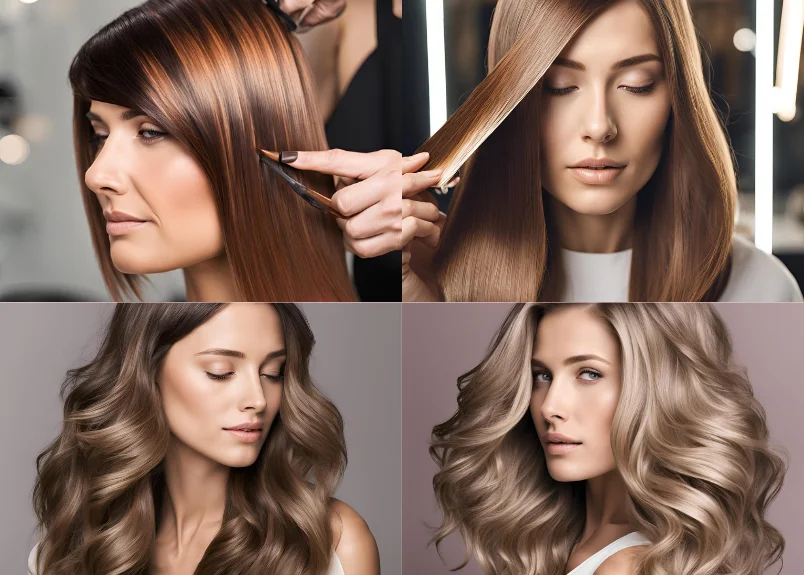
What are benefits of single process color?
Single process color offers a range of advantages that make it a popular choice for hair coloring. Here’s a more detailed breakdown of its benefits:
- Simple and efficient:
- Straightforward application: Single process color involves applying a single dye formula to the entire head of hair, making it a relatively simple procedure compared to more complex techniques like balayage or ombre.
- Quick and efficient: The process is often quicker and more efficient, making it a suitable option for those with limited time or those who prefer a straightforward approach.
- Versatility and customization:
- Wide range of colors: Single process color can be used to achieve a wide variety of shades, from natural-looking tones to bold and vibrant hues. This versatility allows you to experiment with different looks and find the perfect color for your personality.
- Customization options: While single process color typically results in a uniform color, there are variations like root touch-ups and glazing that can be used to add dimension and customization to your look.
- Suit different hair textures: Single process color can be used on various hair types, including fine, medium, and coarse hair. It also adapts to different hair conditions, such as damaged or color-treated hair, with the right products and techniques.
- Cost-Effective option: Compared to more complex coloring techniques, single-process color is often more affordable. This makes it a budget-friendly choice for those seeking a color change without breaking the bank.
- Minimal Upkeep: Once applied, single process color generally requires minimal maintenance. This is especially beneficial for busy individuals who don’t have time for extensive hair care routines.
- Effective gray coverage: Single process color is an excellent option for covering gray hair, providing a uniform and natural-looking result.
- Natural-looking results: Single-process coloring is great for maintaining or enhancing natural hair color, providing a subtle and natural-looking transformation.
Also Read: Which type of hair lends itself to adding fantasy color?
What are drawbacks of single-process color?
While single-process coloring offers several advantages, it may not be suitable for all hair color goals. One significant limitation is its inability to achieve dramatic color transformations, particularly for those seeking to lighten dark hair significantly.
Single-process coloring primarily adds tone to the hair, rather than significantly lifting its natural pigment. As a result, achieving a drastic color change may require multiple sessions or additional techniques, such as pre-lightening. Pre-lightening involves using a bleach-based product to lift the existing color before applying the desired tone. However, this process can be more time-consuming and may potentially damage the hair if not performed correctly.
Is single-process hair color the right choice for you?
When considering single process color, it’s essential to factor in the following elements:
- Natural hair color: Your natural hair color can significantly influence the final outcome. Darker hair may require multiple applications or bleaching to achieve lighter shades, while lighter hair may require less processing.
- Underlying tones: The underlying tones in your natural hair can also affect how the color appears. For example, if your natural hair has brassy undertones, the chosen color may have a different hue than expected.
- Desired color: Certain shades may necessitate additional steps, such as bleaching, to achieve the desired result. For instance, going from a dark brown to a platinum blonde requires multiple rounds of bleaching to lift the natural pigment.
- Color depth: The depth of the desired color can also influence the process. Deeper shades may require fewer applications, while lighter shades may require more.
- Hair health: Healthy hair is generally more receptive to color and retains it better than damaged hair. Damaged hair may have difficulty absorbing the color evenly, leading to uneven results or faster fading.
- Hair porosity: The porosity of your hair can also affect color uptake. Hair with high porosity absorbs color more readily but may also fade faster, while hair with low porosity may require longer processing times.
- Maintenance: To maintain the desired color, regular touch-ups may be necessary. The frequency of touch-ups depends on factors such as your hair growth rate and the desired level of color retention.
- Color Uptake and Fade: Hair texture and density can affect how well the color takes and how quickly it fades. Fine hair may absorb color more readily but may also fade faster, while coarse hair may require longer processing times.
- Coverage: The density of your hair can also affect how well the color is covered. Thicker hair may require more product to achieve a uniform result.
How to choose the single process hair color?
When selecting a single process color, consider the following factors:
- Consult with a professional colorist: A skilled colorist can assess your hair, skin tone, and eye color to recommend a shade that complements your features and enhances your overall appearance. They can also provide valuable insights into the coloring process, potential challenges, and maintenance requirements.
- Consider your lifestyle: Think about how much time and effort you’re willing to invest in maintaining your hair color. Some shades may require more frequent touch-ups or special care products.
- Desired Longevity: Determine how long you want the color to last. If you prefer a temporary change, demi-permanent color might be a better option. For a more permanent look, a permanent color is suitable.
- Test the color: If possible, test a small section of hair with the desired color to see how it looks and feels. This can help you assess the color’s suitability and make an informed decision. Testing can also help you determine if the color appears as expected, taking into account factors like underlying tones and lighting conditions.
How to take aftercare of single process color?
To maintain the vibrancy and longevity of your single process color, follow these essential aftercare tips:
- Use color-safe products: Invest in shampoos and conditioners specifically formulated for color-treated hair. These products help to seal the cuticle, preventing color fade and preserving vibrancy.
- Minimize heat exposure: Excessive heat from styling tools can cause color to fade more rapidly. Try to limit the use of hot styling tools like flat irons and curling irons.
- Use heat protectants: When you do use heat styling tools, apply a heat protectant product to shield your hair from damage and color loss.
- Protect from sun exposure: Sun exposure can cause color to fade over time. Wear a hat or use a hair product with UV protection when spending time outdoors.
- Schedule regular touch-ups: As your color fades, schedule regular touch-ups with your colorist. The frequency of touch-ups will depend on your hair growth rate and desired level of color retention.
By following these aftercare tips, you can prolong the life of your single process color and maintain a vibrant, healthy-looking mane.
Single Process Color vs. Other Techniques
Single process color is a versatile technique that involves applying a single dye formula to the entire head of hair, resulting in a uniform color. While it’s a popular choice, it’s essential to understand its distinctions from other popular methods:
Double Process Color: Double process color is a more complex technique that involves two primary steps:
- Overall Lightening: The hair is first lightened to the desired base color using bleach or a lightening agent. This step is essential for removing the natural pigment and creating a suitable canvas for the desired color. The level of lightening depends on the desired shade; lighter colors require a higher level of lift.
- Single Process with Toning: A single process color is then applied to the entire head of hair, followed by toning to achieve the desired shade and neutralize any unwanted brassiness. Toning involves using a semi-permanent or permanent color with cool undertones to counteract warmth in the hair.
- Balayage and Ombre: These techniques involve creating a gradual transition between colors, often with a darker root and a lighter end. Balayage focuses on hand-painted highlights, while ombre typically features a more dramatic transition.
- Highlights: Highlights involve strategically placing lighter strands throughout the hair to add dimension and texture. They can be partial or full-head highlights, and the placement can be customized to suit individual preferences.
5 Single Process Color ideas to try
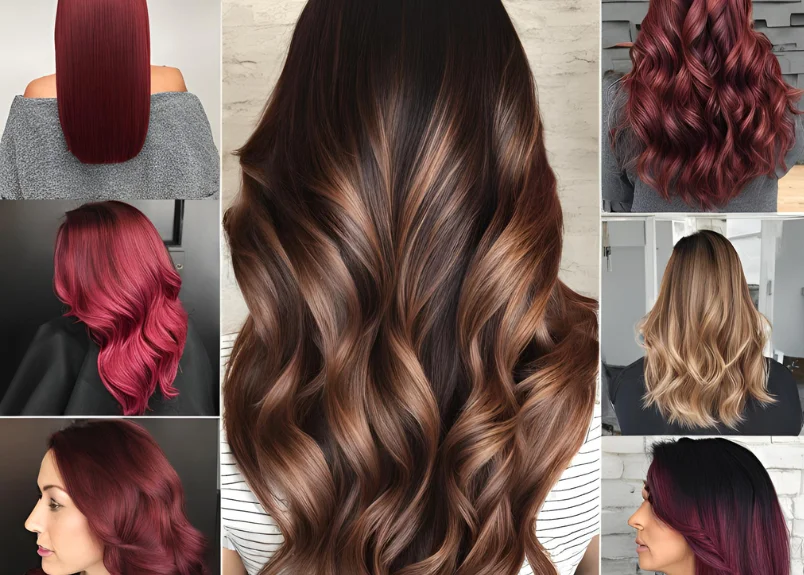
Single process color offers a simple and effective way to transform your hair. Here are five popular options to consider:
- Chocolate Brown: A rich, warm chocolate brown can be achieved in a single session for many hair types. If your starting color is within one or two shades of chocolate brown, it’s a great candidate for single process color.
- Espresso Lowlights: Deep, dark espresso lowlights can add dimension to brown hair without requiring additional toning or bleaching. This is a versatile option that can be achieved in a single step.
- Dirty Brunette: This trendy color combines a brown base with golden blonde highlights. It’s a low-maintenance choice that offers a subtle yet stylish transformation.
- Black Sapphire: For a sleek and modern look, black sapphire is a striking single process color. The blue-tinted black hue adds personality and depth to your hair.
- Honey Blonde Highlights: Warm, honey blonde highlights can add dimension to your hair without requiring extensive bleaching (depending on your starting color). This is a great option for those seeking a single process color with a touch of brightness.
The best single process color for you will depend on your natural hair color, desired outcome, and personal preferences. Consult with a professional colorist to get personalized advice and ensure optimal results.
When should you choose single process color?
Consider single process color if:
- You need root touch-ups: If you have colored your hair with permanent color and need to address regrowth at the roots, single process color is a suitable option.
- You want to enhance your natural hair color: If you aim to deepen or brighten your natural hair color without drastic changes, single process color can be a good choice.
- You seek a quick and straightforward color refresh: If you’re looking for a simple and efficient way to update your hair color, single process color offers a convenient solution.
Can you get both highlights and single process color?
Yes, it’s possible to combine highlights and single process colors. This can be a great option for those who want to cover gray hair while adding dimension and texture to their hair. However, there are a few things to consider:
- Highlight intensity: You may not be able to achieve the desired level of lightness with highlights if you’re also using single process color.
- Hair condition: Combining these techniques can potentially be more damaging to your hair, especially if done frequently or in conjunction with other chemical treatments.
- Cost: Highlights are generally more expensive than single process colors.
- Gentleness: Single process color tends to be gentler on your hair than highlights, as highlights often involve bleaching, which can cause damage.
FAQ: Single Process Color
How long does single process color last?
The longevity of single process color depends on the type used:
Demi-permanent color: Typically lasts up to 24 washes, making it a good option for temporary changes.
Permanent color: Can last until the hair grows out or is cut.
Is single process color damaging?
While single process color can be less damaging than some other coloring techniques, it can still cause some damage to the hair, especially if used frequently or on already damaged hair. It’s important to follow proper aftercare and consult with a professional colorist to minimize damage.
Can you go lighter with single process color?
Yes, single process color can be used to go several shades lighter or darker than your natural hair color. However, going significantly lighter may require multiple applications or additional steps like bleaching.
Final Word: What is a single process color for hair?
A single process color is a hair coloring technique that involves applying one color all over your hair. It’s a great option for those looking for a dramatic change or a more natural look. Whether you’re going for a bold new shade or simply refreshing your existing color, a single process color can give your hair a fresh, vibrant look. Just remember to consult with a professional colorist to ensure you get the perfect shade for your skin tone and hair type.


